Places of Worship in Glossop (Old Glossop and Howardtown)
Parish Church ( All Saints), Old Glossop.
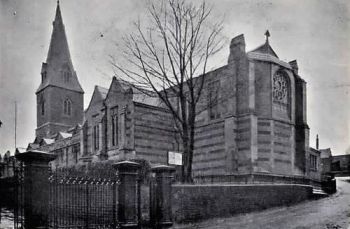
The site has been host to several church buildings. It is thought that the first may have been built shortly after the Norman conquest. The body was rebuilt and public worship was performed in it, for the first time after the repairs were completed, in September, 1832. The church, with nave, chancel, side aisles, tower and spire, with six bells, was rebuilt, except the tower, and spire, in 1831, and enlarged by the addition of two galleries, at the cost of £2,000, by which 800 sittings were obtained, 206 being free and unappropriated. The Duke of Norfolk, as impropriator, repaired the chancel, in which is a handsome monument for George Hadfield, Esq., of Mottram Old Hall, Cheshire, who died September 28th, 1831, aged 59. In 1855 the Duke of Norfolk rebuilt the tower and spire to which the inhabitants added two new bells.
Kelly's Directory of 1899 described the church as a modern edifice of stone, in the Early Gothic style, consisting of chancel, nave, aisles, south porch, vestry, organ chamber, erected in 1877, and a western tower, with spire, containing a clock and 8 bells, re-hung and a chiming apparatus attached in 1877, at a cost of £180; the spire was rebuilt in 1856. In 1886 the nave was reseated with open benches by Daniel Wood esq. of Moorfield, and in 1889 the church was restored and three stained glass windows were placed therein, at a cost of £1,300, defrayed by Miss A. A. Wood and others. The carved oak pulpit was presented, at a cost of £325, by John Wood esq. of Whitfield house: the alter front, presented to the church in 1895, is of carved oak open work tracery panels, flanked by figures of SS. Chad and Aidan, with silk frontals to slide in a groove behind the tracery: choir stalls of carved oak were erected in 1896, at a cost of £180, and in 1898, an oak screen bearing the names of the vicars of Glossop from 1321, was provided at a cost of £50: a new baptistery was erected in the same year and furnished with a font of white marble, presented, at a cost of £200, by C. E. Knowles esq.
The church has its own war memorial.
Wesleyan Methodist Chapel, Wesley Street, Old Glossop.
Originally, a plan had been laid down for erecting a large chapel in the neighbourhood of Rose Green, for the joint accommodation of both Whitfield and Glossop. This scheme failed and one was built in each place. The contract for building the Glossop chapel was let on 13th April 1812 and the walls and roof were completed on 16th November of the same year. The total cost of the Chapel, opened in May 1813 by Rev. John Fairborne, was £522. 19s. 8½d. In 1834 a new lease of the land allowed the chapel to be enlarged to double its original size. At that time the pulpit stood close to the wall at the east end. On the right of the pulpit was a short seat for singers and behind the pulpit was a painted figure of Moses with the tablet of stone. In 1869 there were more building alterations. An organ chamber and vestry were built and the figure of Moses removed. The freehold of the site was purchased for £215 in 1890 and a new organ, costing £200, was installed in 1894. More renovations in 1898 cost £180 when the old windows were replaced with new leaded lights. 1908-9 saw the modernisation of the heating and lighting.
Primitive Methodist Chapel, Greenvale, Glossop.
The Primitive Methodists built their first chapel in Glossop at Greenvale near to the Globe Inn in High Street West on land called the Warth, occupied by Francis J. Sumner. It was opened by George Horbury Esq. of Liverpool on 10th October 1835. The lease was dated 29th September 1835 and was made out to Joshua Graham, overlooker of Littlemoor. The building was registered under the Places of Religious Worship Act 1812 with the Bishop of Lichfield by Joseph Farrand on 20 January 1841. Francis Sumner decided that he wished to extend Wren Nest Mill so the chapel was sold to him and a new Chapel was built on Shrewsbury Street in 1855.
Tabernacle Methodist Chapel, Hall Street (Manor Park Road), Glossop.
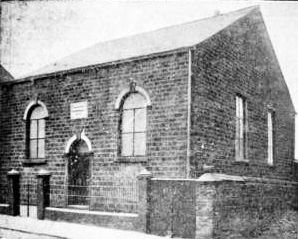
The original chapel was founded by Samuel Warren in 1835, as a Wesleyan Association Chapel, and opened by him on January 1st 1837.

The "new" chapel, with an American organ was built in 1860 and the old chapel became a Sunday School. In 1902 a manual pipe organ was installed. Echoes In Glossop Dale (1874) described the chapel as a large and spacious building which is in connection with the United Methodist Free Churches. After the Great War a font was placed in the chapel in memory of those who had fallen in conflict. The chapel closed on 28th August 1960 and the congregation moved to the chapel in Shrewsbury Street, Glossop.
All Saints R.C. Church, Old Glossop.

All Saints was the first Catholic church in the area, built in 1836 by Bernard Edward, twelfth Duke of Norfolk, in the Tuscan style. The design was by Weightman and Hadfield, at a cost of £3,000. The interior contained an altar by Mr George Eadon, of Sheffield; an organ by Bishop, and an ancient picture of the crucifixion, a copy of an original at Antwerp. The church consists of chancel, nave and a belfry containing one bell.
The church has its own war memorial.
Wesley Chapel, Howardtown, Glossop.

This was by far the largest chapel on the Circuit, built near the centre of town and generally known as "Big Wesley". The foundation stone was laid on Good Friday 1844. Although the chapel was large enough to accommodate about 500 worshippers, the congregation increased so rapidly that in a few years the place was too small. The foundation stone for the larger chapel (about 1500 sittings) was laid by S. Turnbull Esq. of Manchester on Good Friday 1858. The Chapel closed on August 28th 1960 when there was a reorganisation of Methodist Chapels and the congregation transferred to Central Methodist Church, Chapel Street, Glossop.
Wesleyan Reform Chapel, Howard Street, Glossop.
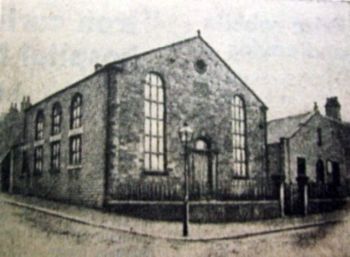
The original chapel was opened on 5th November 1854, with seating for 250 people. An organ was added in 1873 at a cost of £230.
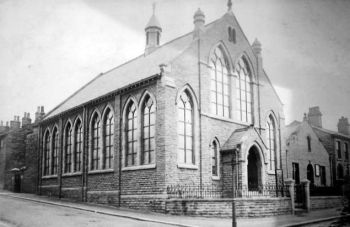
It was decided that a new Chapel should be built so the old building was demolished and the foundation stones for the new Chapel were laid on June 19th 1897. The Chapel cost £2640 and was opened on May 15th 1898.
The chapel was eventually demolished in 1965 after being closed for a few years.
Shrewsbury Street Methodist Chapel, Glossop.
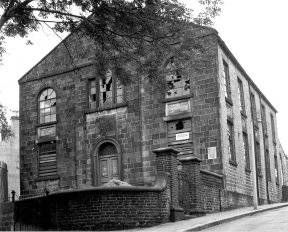
The chapel was erected and opened in 1855 as a replacement for the Green Vale chapel. It was fully renovated in the late 1880s. A few years later a pipe organ was installed at a cost of £400.
The chapel had its own war memorial.
St. Luke's, Fauvel Road, Glossop.
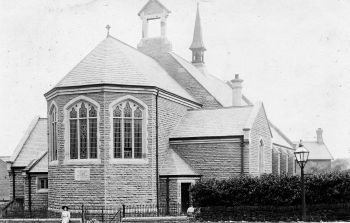
St. Luke's is a daughter Church of St. James's, Whitfield. It started life as a mission in a room over Goldthorpe's shop at the corner of Charles Street and Talbot Street, before the erection of the "Iron Church" in 1895, a gift from Mrs A. K. Wood, on the land where the present church now stands. Jonas Goldthorpe was a beer retailer at 33 Charles Street. The "Iron Church" was demolished in 1903 and the foundation stone for a new church was laid on October 21st 1905 by Mrs. A. K. Wood, the church being completed in the following year. The builder was Mr. Joseph Howard of Glossop.
The church has its own war memorial.
Unitarian Church, Fitzalan Street, Glossop.
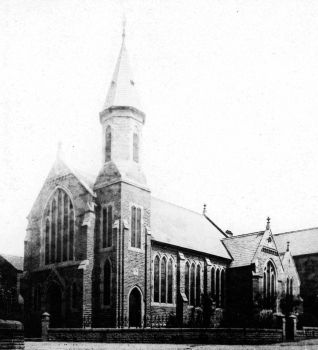
The original church, a gift from Edmund Potter, was built in 1874 on land in Fitzalan Street leased from Lord Howard for £1. Around 20 years later it was decided that a new Church should be built and the old building was demolished. The foundation stone for the new Church was laid on 27th April 1895, the Church being designed by Mr. J. Lindley-Hyde and constructed by S. Robinson & Son of Hyde. It cost £3,500 and had seating for nearly 400 people. A Norman Beard organ was installed in December 1910. The font was installed in memory of Lord Doverdale. The building is now a private residence.
The church had its own war memorial.
Elim Pentecostal Church, Ellison Street, Glossop.
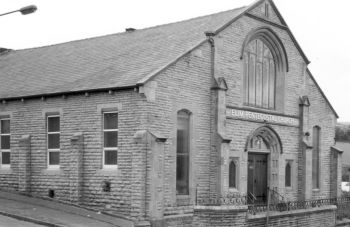
The foundation stones for what was then known as The Gospel Union and Blue Ribbon Mission were laid on Saturday 15th July 1888. The Mission arose from the Blue Ribbon Army, which held services on street corners and had been founded by Pastor Howton when he first came to Glossop. This Chapel is still in use today.
Bethel Pentecostal Church, High Street East, Glossop.

The buildings in which the chapel was opened were built by Benjamin Platt as a grocery shop with houses either side and a corn chamber above. The building was later used as a billiard hall before the chapel was founded in 1947. The Chapel had a seating capacity for 150 people with a tiled baptistry below the lower platform, much of the work done being carried out by members of the congregation. The building is now private residences.
Central Methodist Church, Chapel Street, Glossop.
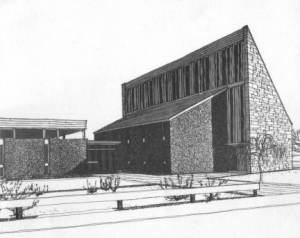
The foundation stone for the church, built on the site of the old Shepley Mill as a result of reorganisation of local Methodist chapels, was laid on 26th March 1966. The Church was opened by the Mayor, Mrs. Ada Williams on 1st October 1966. The congregation was composed of those from Princess Street, Tabernacle, Ebenezer and Wesley, High Street Chapels which all closed around 1960 following reorganisation.
Jehovah Witness, Kingdom Hall, Milltown, Glossop.
The hall is situated on Milltown.
Return to GJH.me Home Page, Return to Glossop Area Local Histories index.
Last updated: 10 April 2024












